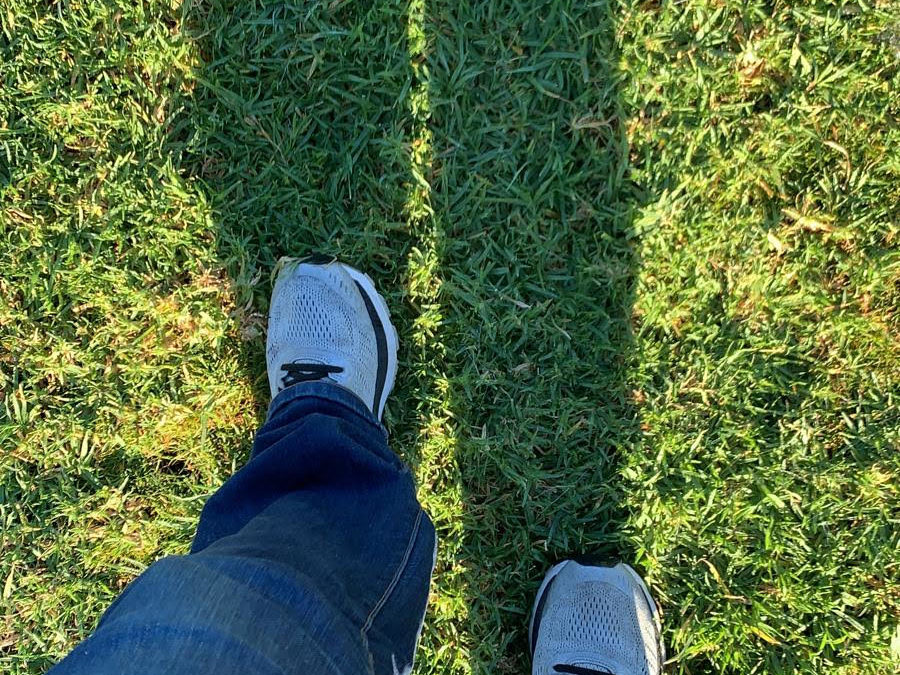You must have heard that you need to “start small” when adopting new habits. This is rooted in our brain’s resistance to change, as it tries to keep things safe and familiar for us, even if that means eating pints of Ben & Jerry’s in front of the TV and feeling like a failure in business and in life… 😉 In the past, I often felt that my brain was a freaked out little bunny, screaming “Noooooo!” at any suggestion I tried to make.
Therefore, I realized I needed to go from “small” to “microscopic” (or “infinitesimal” if math is your thing). I wanted to take up exercise again. I’d never been a star athlete, but I did train seriously for several years. After years of oscillating between serious (sprint triathlons, even one marathon) to couch potato, I tried to get back to running and promptly got injured. Doh! Decided to scale down and start walking, at least until I felt I could run again, and knew the best time would be early in the morning. Unfortunately, that requires going to bed earlier at night, which is another change (cue bunny screaming, “Whhhaaaattttt?????? Change???? Nooooooooooo!!!”)
Next best option: do a short walk on the way home after dropping my kid off at school. There are parents who do that, you see them come in wearing their shiny workout clothes looking all smug on their way to their morning run or to the gym. I think I could pull off workout clothes at the school hallways without anyone giggling, pointing and staring, but it still makes me feel kinda uncomfortable. (At this point, the bunny is whimpering under the couch, nowhere to be seen).
Until finally, I had a brainwave! The microscopic goal meant that I’m only going to go on a short walk, barely even breaking out a sweat. I actually only needed my gym shoes, not the clothes! Yesss. There’s something so microscopicly small, it can definitely be mastered.

That first day, I had a great little walk, which was extremely enjoyable. It didn’t take much too turn it into a daily habit (ok, on weekdays only…)
Dr. BJ Fogg from Stanford has an entire methodology called Tiny Habits, where he recommends starting super small, and connecting the habit to an “anchor” habit, which you already maintain successfully. So here we have a 20 minute walk, connected to a routine anchor task in this case (not exactly a habit, but still something scheduled and regular) which is taking the kid to school.
My problem with the tiny habits method was that its most quoted examples were always a little preposterous to me. The classic one is flossing one tooth. To me, the difficulty in this case would be remembering to floss, finding the floss, etc. Once I started it, stopping after one tooth was obviosuly foolish, so committing to just one tooth felt weird.
Similarly, I want to drink a glass of water every morning immediately after I wake up, so what would the tiny habit be? A sip of water every morning? The tough thing for me is not to be distracted during morning meyham and remember the water. At that point, it doesn’t matter what quantity I drink.
The jeans + running shoes required the same focus. During the first few days, I tended to forget to put the shoes on, because they were not my regular shoes for walking to school. I tried to leave them next to my bed so they caught my eye in the morning. Then, the next challenge, was to turn left to the park and start my walk, instead of absentmindedly turning right and going back home without realizing it. That, too, improved after several days of on-and-off success, until the left turn outside of the gate becomes a habit.
So my recommendation to you is this:
- Define the new habit you’d like to adopt
- Be brutally honest with yourself about what makes it difficult. Is it the timing, people you’re with, remembering it, does anything about it make you feel bad or awkward? Your answers might seem silly but it doesn’t matter, because they will block you nonetheless, so you have to find a way around them.
- Define a tiny/watered-down version of the habit that seems both doable and reasonable (i.e. not too dumb to commit to)
- Find your anchor habit or routine task to which you can connect your new habit
- Start doing them together.
- If needed, add reminders, like post-it notes, placing needed items together, etc.
- Optional: let me know in the comments how it went…! 😉
To read more about Tiny Habits, check out these resources:
https://www.success.com/tiny-habits/
Good luck!
🙂 Shlomit



Trackbacks/Pingbacks